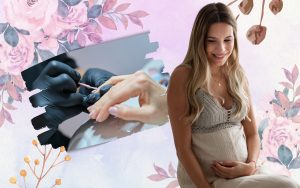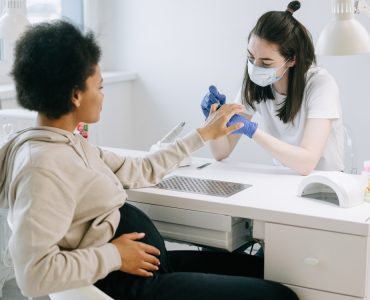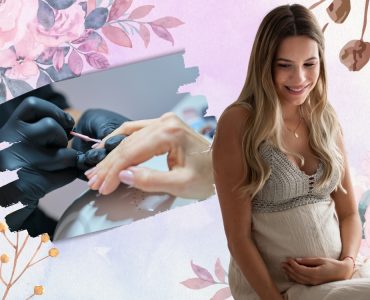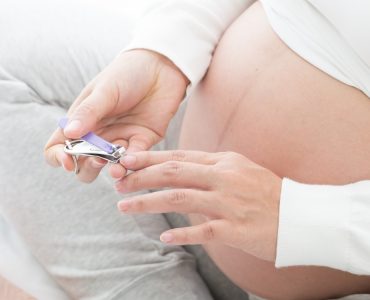Pregnancy is a beautiful and transformative time in a woman’s life, but it also comes with certain considerations and precautions. Many expectant mothers are concerned about the products they use during pregnancy, and one common question that arises is whether it is safe to wear nail polish.
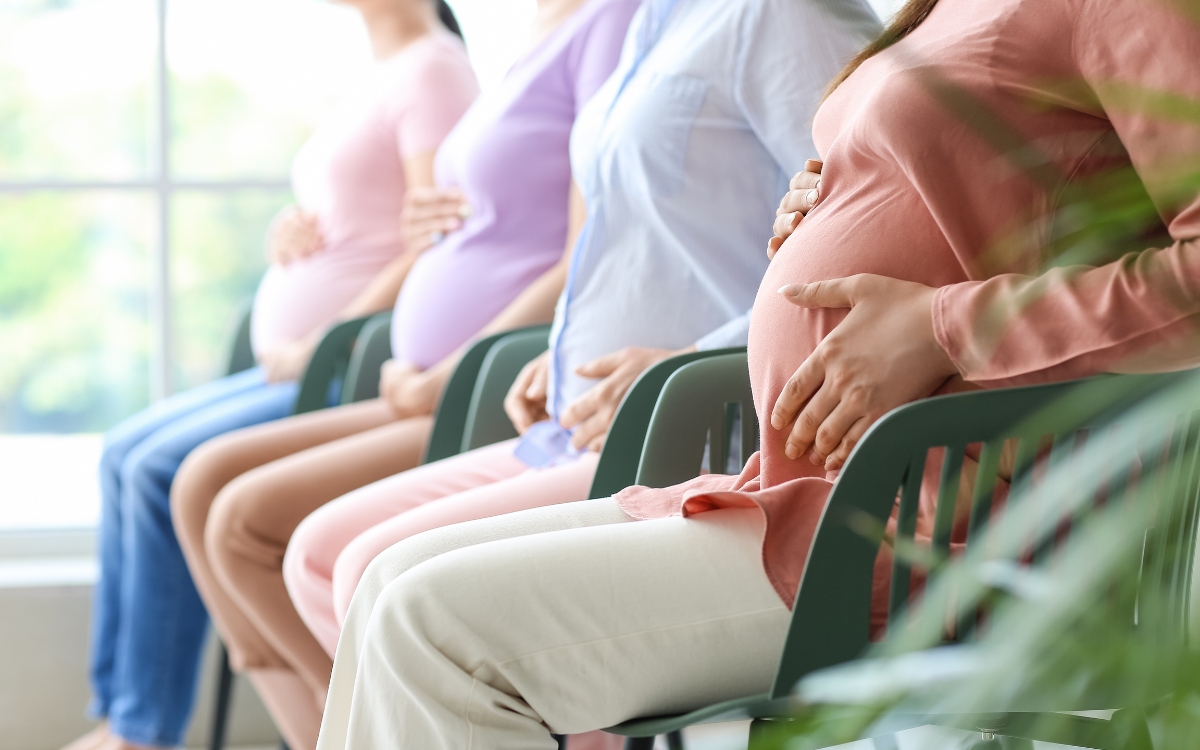
With the well-being of both the mother and the baby in mind, it’s important to understand the dos and don’ts of nail polish for pregnant women. In this blog post, we will explore the key guidelines to follow when it comes to choosing and applying nail polish during pregnancy, ensuring a safe and enjoyable experience for every mom-to-be.
Understanding the Risks: Nail Polish and Pregnancy
During pregnancy, it’s crucial for expectant mothers to be aware of the potential risks associated with nail polish. While nail polish itself is generally considered safe, certain chemicals present in some nail polish formulations can pose risks to both the mother and the developing fetus. Understanding these risks can help pregnant women make informed decisions and take necessary precautions when it comes to their nail care routine.
Exploring the Potential Risks
Nail polish contains various chemicals that contribute to its color, texture, and durability. Two key components of concern are formaldehyde and toluene. Formaldehyde, often used as a preservative, can be harmful when inhaled or absorbed through the skin in large amounts. Toluene, a solvent, is known to have adverse effects on the nervous system.
Absorption and Potential Effects
It’s important to note that the absorption of chemicals through the nails and surrounding skin is generally low. However, some studies suggest that the absorption rate may increase during pregnancy due to hormonal changes and increased blood flow. While direct evidence of harm from nail polish use during pregnancy is limited, it’s still prudent to take precautions to minimize any potential risks.
Health Concerns for the Mother
Prolonged exposure to certain chemicals found in nail polish can have health implications for the mother. These may include irritation, allergic reactions, and respiratory issues. Pregnant women with pre-existing sensitivities or allergies should be especially cautious and consult their healthcare provider if necessary.
Read This Next:
Potential Risks to the Developing Fetus
The primary concern regarding nail polish use during pregnancy is the potential risk to the developing fetus. While the specific effects of nail polish chemicals on fetal development are not yet fully understood, some studies suggest a possible link between exposure to certain chemicals and adverse outcomes such as birth defects and developmental issues.
The Dos: Safe Practices for Nail Polish during Pregnancy
When it comes to nail polish during pregnancy, there are several safe practices that expectant mothers can follow to ensure the well-being of themselves and their developing babies. By implementing these dos, pregnant women can enjoy a manicure while minimizing potential risks.
Choosing Pregnancy-Safe Nail Polishes
Opting for nail polishes specifically formulated for pregnant women is a wise choice. Look for brands that advertise as “pregnancy-friendly” or “non-toxic.” These polishes are typically free from harmful chemicals like formaldehyde, toluene, and dibutyl phthalate (DBP). Reading labels and ingredient lists can help identify safe options.
Proper Nail Preparation
Before applying nail polish, it’s important to properly prepare the nails. Start by cleaning the nails and removing any old polish. Trim and shape the nails to the desired length, keeping them neat and tidy. By maintaining good nail hygiene, you can create a clean canvas for the polish application.
Adequate Ventilation and Avoiding Harsh Chemicals
Ensure that the space in which you apply nail polish is well-ventilated. Open windows or use a fan to promote air circulation and reduce the concentration of fumes. Additionally, avoid nail polishes that contain harsh chemicals like formaldehyde, toluene, and DBP. Opt for formulas that are labeled as “3-free” or “5-free” to minimize exposure to potentially harmful substances.
Regular Hydration and Moisturization
Keeping your nails and cuticles moisturized is essential during pregnancy. Hormonal changes can sometimes lead to dryness and brittleness. Use pregnancy-safe moisturizing products specifically designed for nails and cuticles. Regularly applying cuticle oil or a gentle moisturizer can help maintain their health and prevent dryness.
Practicing Good Nail Polish Removal Techniques
Properly removing nail polish is just as important as applying it safely. Avoid using harsh acetone-based nail polish removers, as they can dry out the nails and cuticles. Opt for gentler alternatives such as acetone-free removers or natural removers that are safe for pregnancy. Be sure to follow the instructions provided by the product and avoid excessive scrubbing or filing, which can weaken the nails.
Read This Next:
The Don’ts: Nail Polish Practices to Avoid during Pregnancy
While there are safe practices for using nail polish during pregnancy, it’s equally important to be aware of the practices to avoid. By steering clear of certain actions and choices, expectant mothers can further reduce potential risks and promote a healthier nail care routine.
Using Toxic Ingredients
One of the most critical steps is to avoid nail polishes that contain toxic ingredients. Some common harmful chemicals found in nail polishes include formaldehyde, toluene, and dibutyl phthalate (DBP). These substances have been associated with potential risks to both the mother and the developing fetus. Carefully read the labels and ingredient lists of nail polishes to ensure they are free from these harmful chemicals.
Salons with Poor Ventilation
It’s important to choose nail salons that prioritize proper ventilation. Poorly ventilated spaces can lead to a higher concentration of fumes, increasing the risk of inhaling potentially harmful chemicals. If possible, opt for well-ventilated salons or consider doing your manicures at home where you can control the environment.
Using Nail Extensions and Artificial Nails
During pregnancy, it’s best to avoid nail extensions and artificial nails. These procedures typically involve the use of strong adhesives and acrylics, which emit fumes and can contain chemicals that are not recommended for pregnant women. Opting for natural nails is a safer choice to minimize potential harm.
Increasing Nail Polish Usage Frequency
While it may be tempting to constantly change nail polish colors, it’s advisable to limit the frequency of nail polish applications during pregnancy. Frequent exposure to nail polish and its associated chemicals may increase the overall chemical load on the body. Allowing your nails to breathe between manicures can help reduce potential risks.
Using DIY Gel or Shellac Nail Treatments
Gel or shellac nail treatments, which provide longer-lasting nail color, typically involve exposure to UV or LED lights during the curing process. While there is limited research on the specific effects of these treatments during pregnancy, it’s best to err on the side of caution and avoid them. Opt for safer alternatives that do not require UV or LED lights for curing.
Alternative Nail Care Options for Pregnant Women
While traditional nail polish is generally safe when used correctly, some pregnant women may prefer to explore alternative nail care options that provide peace of mind and minimize potential risks. These alternatives offer safe and pregnancy-friendly ways to maintain beautiful nails without compromising the well-being of the mother or the developing baby.
Embracing Natural Nail Health
Emphasizing natural nail health during pregnancy is a fantastic alternative to traditional nail polish. Focus on proper nail care routines that involve regular trimming, shaping, and buffing to maintain neat and healthy nails. By prioritizing nail hygiene, you can achieve a polished and well-groomed look without the use of chemical-laden polishes.
Exploring Non-Toxic and Water-Based Nail Polishes
Non-toxic and water-based nail polishes are an excellent option for pregnant women seeking a safer alternative. These polishes are formulated without harmful chemicals such as formaldehyde, toluene, and DBP. Look for brands that specifically advertise as “pregnancy-safe,” “non-toxic,” or “water-based” to ensure the utmost safety and peace of mind.
Nail Art and Decoration Ideas without Chemical Exposure
Pregnancy doesn’t mean sacrificing creativity and self-expression. Consider exploring nail art and decoration ideas that do not involve direct contact with traditional nail polish. Non-toxic nail stickers, decals, or embellishments can add a touch of fun and style to your nails without exposing yourself to potentially harmful chemicals. These options allow you to achieve unique and eye-catching designs while avoiding direct contact with nail polish.
Prioritizing Nail and Cuticle Hydration
Regardless of the absence of traditional nail polish, it’s crucial to maintain adequate nail and cuticle hydration during pregnancy. Regularly moisturize your nails and cuticles with pregnancy-safe products, such as cuticle oils or gentle moisturizers. Hydrated nails and cuticles promote overall nail health and can contribute to a naturally beautiful appearance.
Opting for Buffing and Nail Strengtheners
Buffing your nails can provide a glossy and polished look without the need for nail polish. Use a gentle nail buffer to smooth the nail surface, enhance shine, and create a healthy glow. Additionally, consider using nail strengtheners or nourishing treatments that promote strong and resilient nails. These options help maintain the integrity of your natural nails while enhancing their appearance.
Conclusion
As an expectant mother, it’s essential to prioritize your health and well-being, as well as that of your developing baby. Nail polish can be a fun and creative way to express yourself, even during pregnancy, but it’s crucial to make informed choices and follow the necessary precautions. By adhering to the dos and don’ts outlined in this blog post, you can confidently enjoy the occasional manicure without worrying about potential harm to yourself or your baby.




